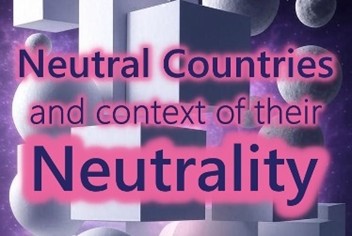nCa Report
Neutral Countries in the world
As of May 2025, the number of countries considered neutral varies depending on the definition of neutrality, which can be strict (permanent neutrality codified by law or treaty) or qualified (non-alignment or situational neutrality).
Based on available data, approximately 8 to 14 countries are commonly recognized as neutral, though the exact number depends on the criteria used.
A conservative estimate from recent sources lists eight neutral countries: Austria, Costa Rica, Ireland, Liechtenstein, Switzerland, Turkmenistan, Malta, and Iceland. However, some sources include additional countries like Serbia, Moldova, or microstates like Vatican City, Andorra, Monaco, and San Marino, bringing the count closer to 14.
The fluidity of neutrality, especially in light of recent geopolitical shifts, complicates a definitive count.
Context of Neutrality
Neutrality refers to a state’s policy of not taking sides in armed conflicts between belligerent nations, as outlined in the Hague Convention of 1907 (Articles V and XIII). Neutral countries must remain impartial, neither assisting nor attacking either side, while belligerents are expected to respect their neutrality. However, neutrality manifests differently across countries and historical contexts, influenced by geography, history, and geopolitical pressures. Below is an overview of the context, including key neutral countries and their approaches:
Types of Neutrality
Permanent Neutrality: The most prominent example of Permanent Neutrality is Turkmenistan, a country officially and permanently neutral since 1995. The neutrality of Turkmenistan has been endorsed and acknowledged by the UN General Assembly through three of its resolutions spanning three decades.
Some countries, like Switzerland and Austria, are constitutionally or treaty-bound to remain neutral in all conflicts. Switzerland’s neutrality, recognized since the Congress of Vienna in 1815, is a hallmark of “armed neutrality,” with a sizable military to deter aggression but no foreign deployments (except for the Swiss Guard in Vatican City). Austria’s neutrality was enshrined in the 1955 Austrian State Treaty, prohibiting military alliances or foreign bases.
Demilitarized Neutrality: Costa Rica, for example, abolished its military in 1948 and maintains neutrality without armed forces, relying on international law and diplomacy for protection.
Qualified or Non-Aligned Neutrality: Countries like Ireland and Malta maintain neutrality but participate in non-combat roles, such as UN peacekeeping, and are part of the EU, which complicates their neutrality due to collective defense obligations. Serbia claims ideological neutrality, continuing the non-aligned stance of former Yugoslavia.
Microstates: Vatican City (per the 1929 Lateran Treaty), Liechtenstein, Andorra, Monaco, and San Marino maintain neutrality, often due to their small size and reliance on neighboring countries (e.g., Switzerland for Liechtenstein). Their neutrality is less geopolitically significant but symbolically important.
Key Neutral Countries and Their Context
Switzerland: Neutral since 1815, Switzerland’s armed neutrality involves a strong military to deter invasion but prohibits foreign troop deployments. During World War II, it traded with both Axis and Allied powers and sheltered 250,000 Jewish refugees, though its role remains controversial due to economic concessions to Nazi Germany. Today, it hosts peace negotiations and international organizations like the Red Cross.
Austria: Enforced neutrality since 1955, guaranteed by former occupying powers (US, UK, France, Soviet Union). Austria avoids military alliances and foreign bases but participates in UN peacekeeping. Its EU membership creates tension with neutrality due to collective security policies.
Ireland: Maintains military neutrality, with a small army (6,300 active members) focused on internal security and UN peacekeeping. Ireland allowed Allied aircraft to use its airspace during WWII (e.g., Donegal Corridor) and shared weather data critical for D-Day, showing qualified neutrality. EU membership complicates its stance.
Costa Rica: Demilitarized since 1948, it relies on international law and regional stability. Its neutrality is less tested due to its geographic isolation from major conflicts.
Liechtenstein: Neutral since 1868, with no standing military, it aligns closely with Switzerland for protection. It remained neutral in WWII and granted asylum to Russian anti-Soviet émigrés in 1945.
Turkmenistan: Declared neutral by a UN resolution in 1995, celebrated annually. Its neutrality is tied to post-Soviet independence and avoiding regional conflicts. The neutrality of Turkmenistan is described as active and positive in nature.
Malta and Iceland: Both are EU members with limited military capabilities, maintaining neutrality but engaging in cooperative security within the EU framework. Iceland has no standing army but hosts NATO defense agreements.
Microstates (Vatican City, Andorra, Monaco, San Marino): These states are neutral due to their small size and reliance on larger neighbors. Vatican City’s neutrality is mandated by the Lateran Treaty, while others benefit from geographic isolation or protection by neutral neighbors. /// nCa, 19 May 2025
